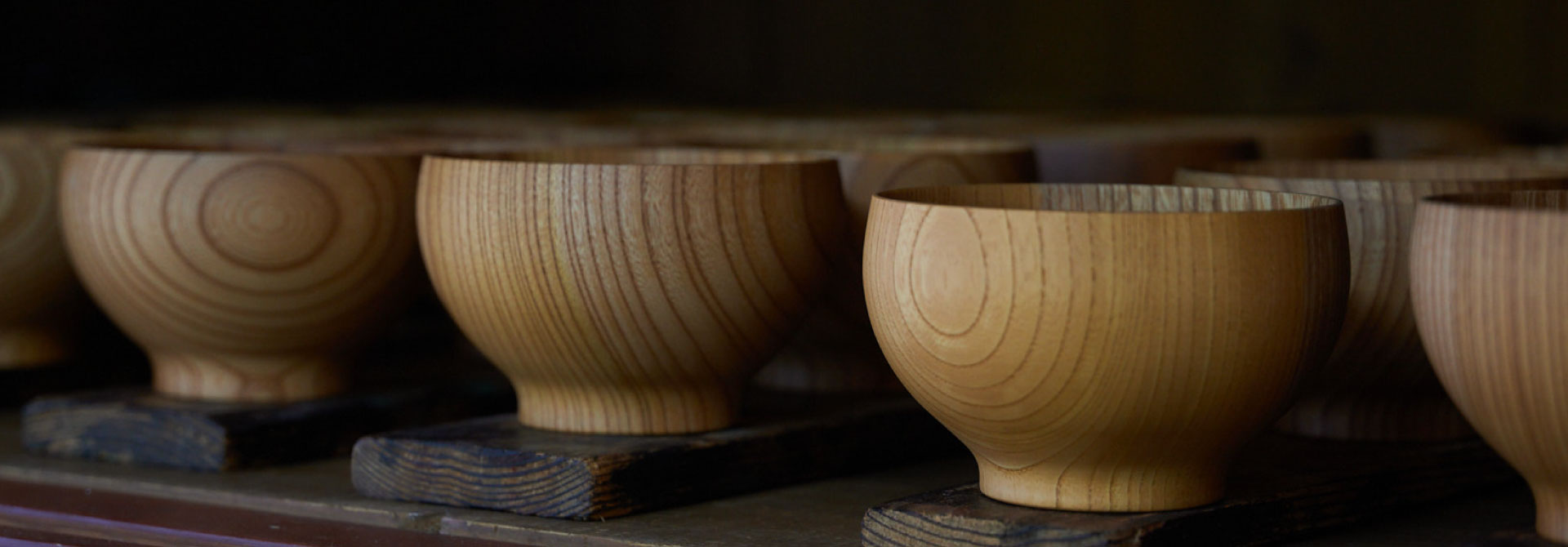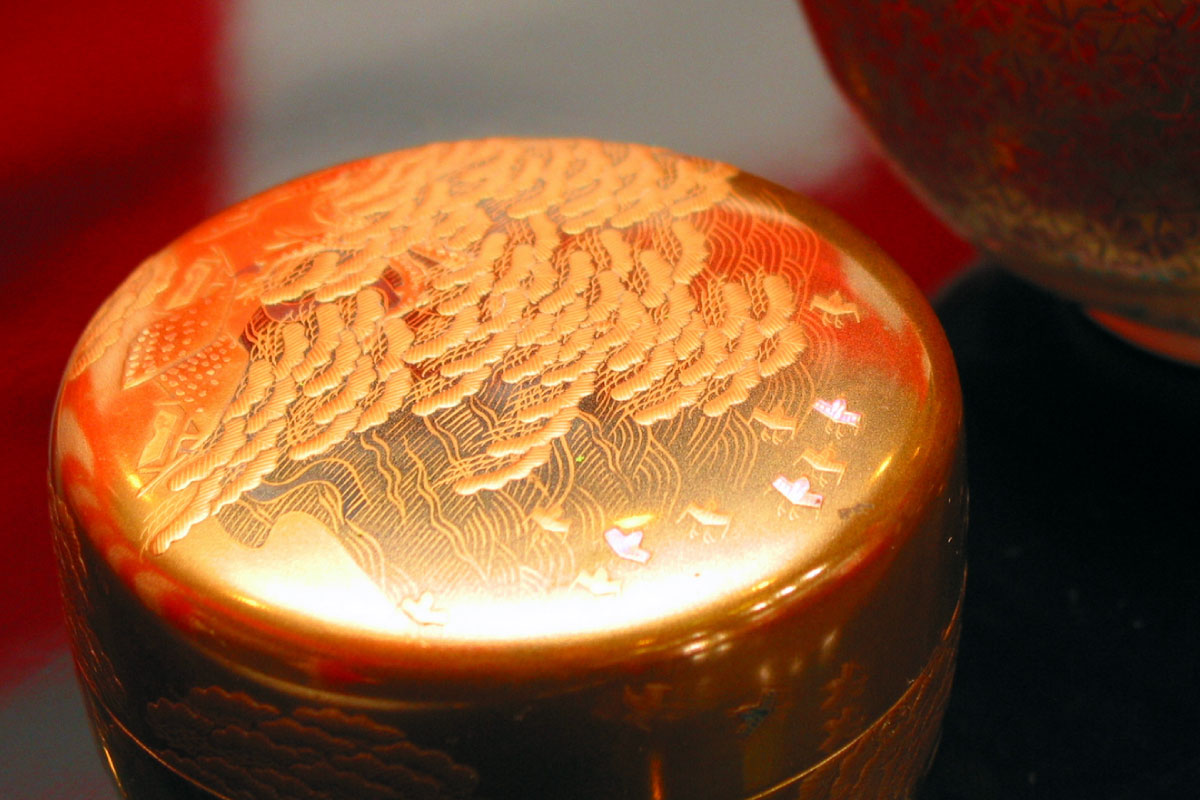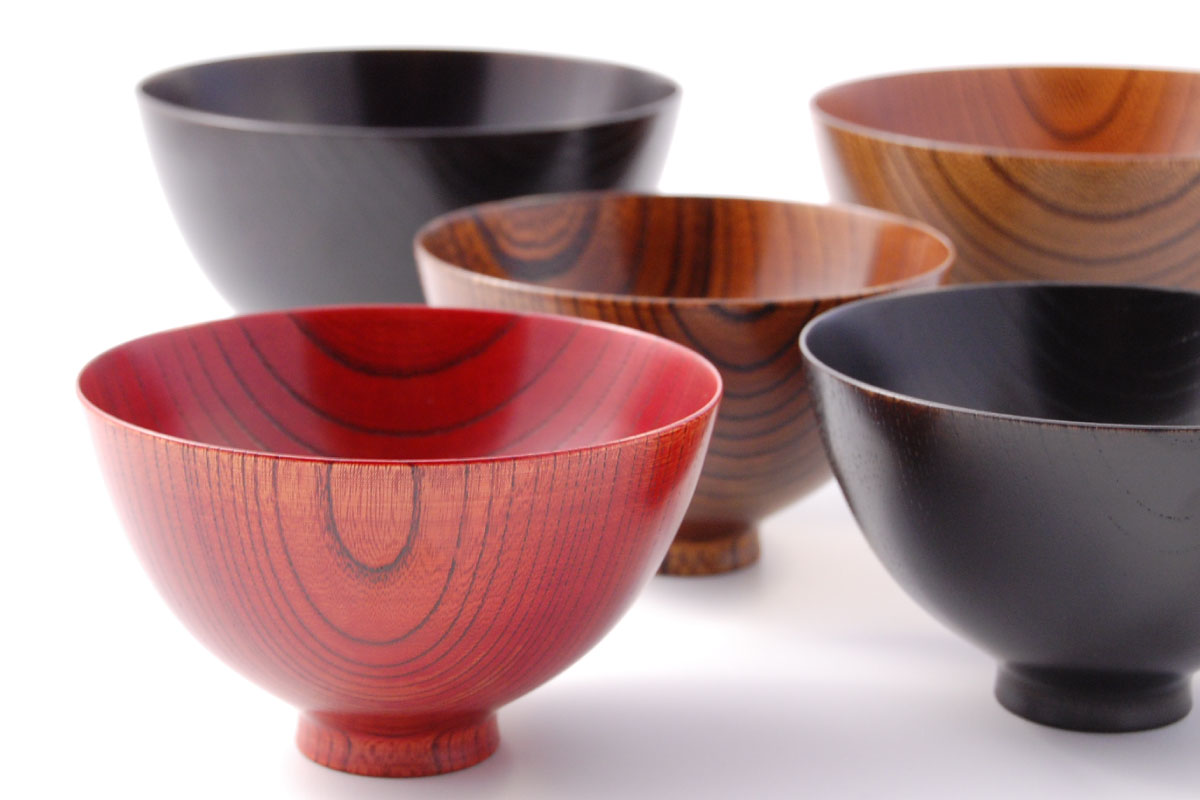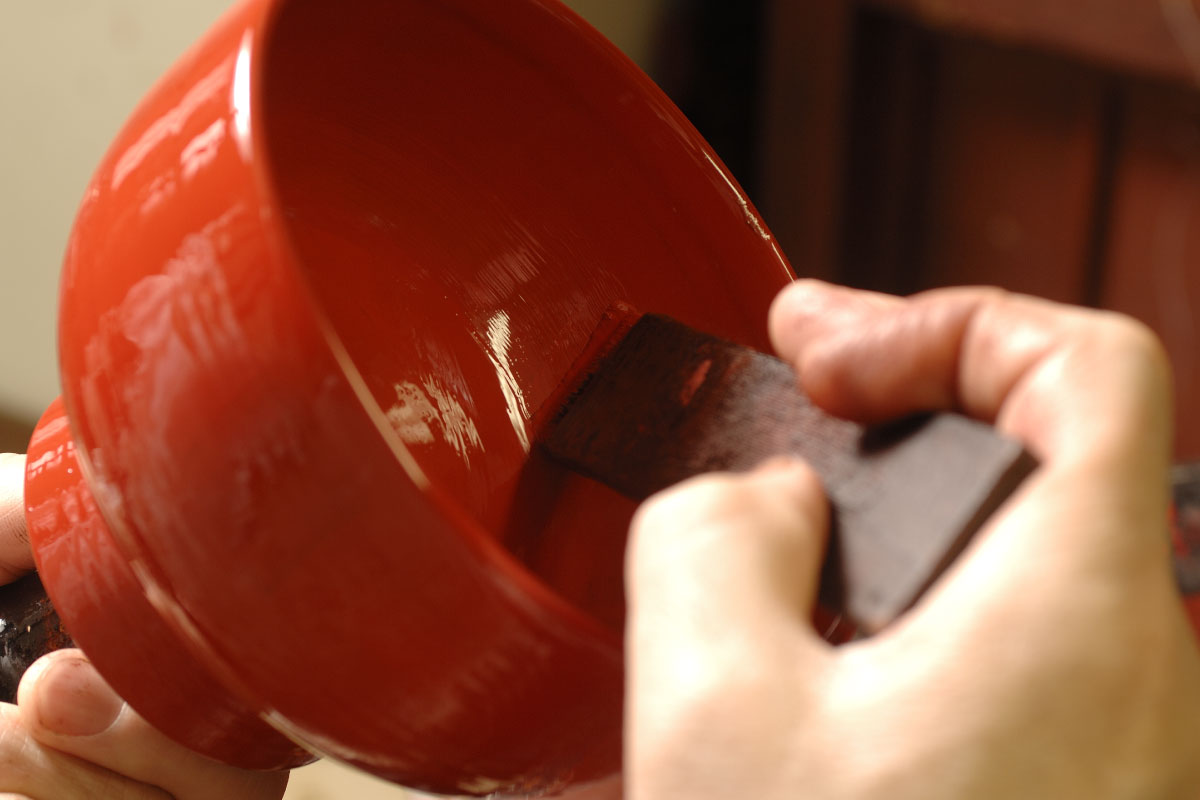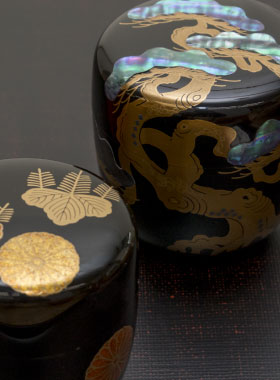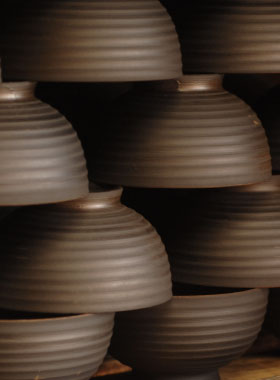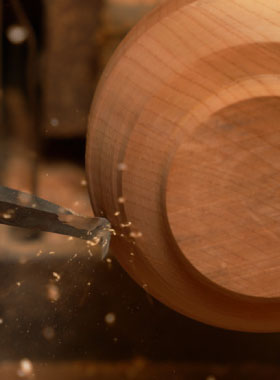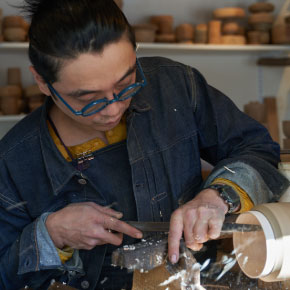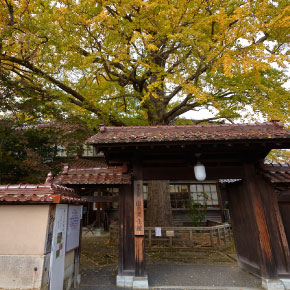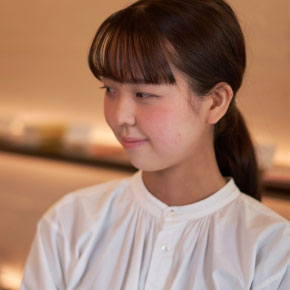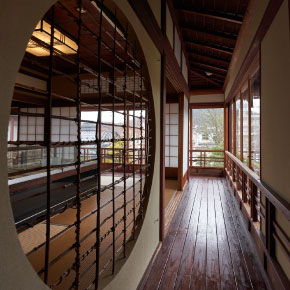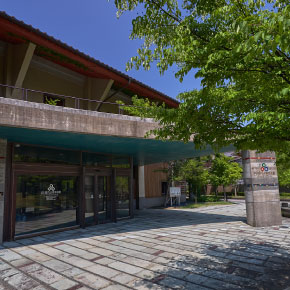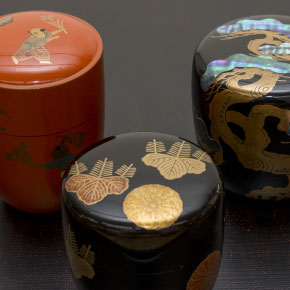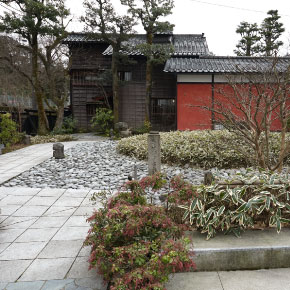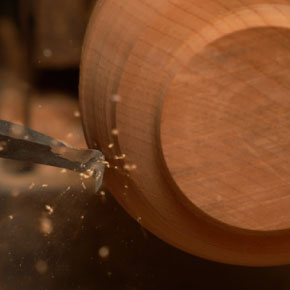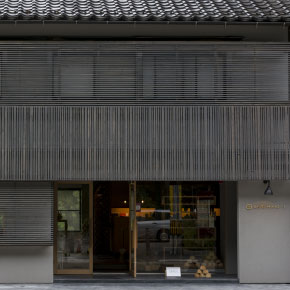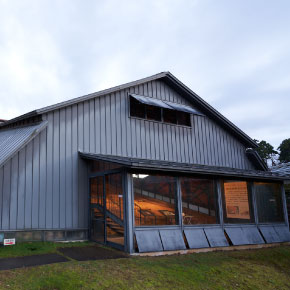Wooden Works of Art
Glossy and glistening wooden wares line the gallery and shop walls of various establishments in the picturesque Yamanaka Onsen. They are examples of Yamanaka lacquerware, the pride of the Kaga City area, and renowned across Japan. The term ‘Yamanaka lacquerware’ refers to both the traditional craft and the creations themselves, specifically, hand-crafted wooden items which are then coated in lacquer. Once coveted by Japanese aristocracy, and used in the prestigious Japanese tea ceremonies of old, Yamanaka creations are admired as much today as they were centuries ago.
Celebrating Nature’s Patterns
Whilst lacquerware is produced in several parts of Japan, Ishikawa Prefecture’s lacquerware is regarded as one of the finest. Creations are intricate and unique owing to its production methods. One striking characteristic of Yamanaka lacquerware is the deliberate display of wood grains. As if honouring the natural world, artisans choose to keep wood patterns and defects visible. The resulting creations are one of a kind and fascinatingly beautiful: smooth bowls with a wavy grain around their base or a naturally speckled sake cup. More variety can be seen across wood types. After being lacquered, different woods produce different colours depending on their absorption of the lacquer.
A Time-Honoured and Complex Craft
Many Yamanaka-nuri craftspeople employ the same production techniques today as 400 years ago. Some still work with foot-powered lathes and many use a variety of hand-forged tools. This means that the designs and patterns they create are unparalleled by any other style of lacquerware, or indeed any other item. To the layman’s eye, the differences between the tools are slight, but for the artisan, each marks the wood in a completely different way. The process is intensely delicate, requiring the utmost patience and steady handiwork. Artisans train for years before they are able to join one of the workshops. Different designs and textures on the items often serve a dual purpose: they are striking but also functional, with some textures acting as slip prevention.
The lacquer itself is a glaze made from tree sap and it gives the wood a rich and lustrous effect. After the lacquer is added it must be left to solidify. One coat can take over 3 weeks to dry, and often several layers are required. For some particularly ornate masterpieces, it can be a delicate and time-consuming process, sometimes taking more than a year to reach completion. It is common for Yamanaka-nuri ateliers to be long-standing family businesses, with knowledge of the craft being passed down through the generations. Today, there are only 15 people in the Yamanaka Onsen area who are qualified in the art of applying lacquer.
Humble Beginnings
Yamanaka lacquerware has enjoyed a lengthy history, dating back to the Azuchi-Momoyama period (1573-1594). Between 1573 and 1592 a group of Japanese craftsmen went in search of natural resources that would help them hone their skills. They eventually settled in the mountains near what is now the resort town of Yamanaka Onsen. In the Edo era (1603-1868), as Yamanaka Onsen grew in popularity, so did interest in the craftsmen’s wares. The trays, plates and toys they created, and sold to visitors, became highly sought-after souvenirs and at once Yamanaka-nuri was born.
By the 1800s, Yamanaka lacquerware evolved to adopt other region’s techniques. One such technique was ‘Maki-e’ – the art of sprinkling gold powder in the lacquer. It was an expensive and painstaking technique, and the resulting creations were opulent and reserved for aristocracy.
Yamanaka Lacquerware Today
Maki-e is a technique still used today, but nowadays Yamanaka lacquerware is accessible to all. Yamanaka Onsen produces lacquerware items for everyday use. Sake cups, soup bowls and other kitchen utensils are available to buy at various shops and galleries in and around Yamanaka Onsen. Visitors can also try their hand at carving the wooden bases on a lathe at one of the town’s workshops.
